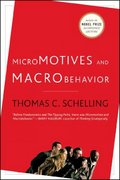Question
Please explain and answered step-by-step CASE STUDY 1 MANAGERIAL CHALLENGE Why Charge $25 per Bag on Airline... CASE STUDY 1 MANAGERIAL CHALLENGE Why Charge $25
Please explain and answered step-by-step
CASE STUDY 1 MANAGERIAL CHALLENGE Why Charge $25 per Bag on Airline...
CASE STUDY 1
MANAGERIAL CHALLENGE
Why Charge $25 per Bag on Airline Flights?
In May 2008, American Airlines (AA) announced that it would immediately begin charging $25perbagonallAA ights, not for extra luggage but for the rst bag! Crude oil had doubled from $70 to $130 per barrel in the previous 12 months, and jet fuel prices had accelerated even faster. AA's new baggage policy applied to all ticketed passengers except rst class and business class. On top of incremental airline charges for sandwiches and snacks introduced the previous year, this new announcement stunned the travel public. Previously, only a few deep- discount U.S. carriers with very limited route structures such as People Express had charged separately for both food and baggage service. Since American Airlines and many other major carriers had belittled that policy as part of their overall marketing campaign against deep discounters, AA executives faced a dilemma.
Jet fuel surcharges had recovered the year-over-year average variable cost increase for jet fuel expenses, but incremental variable costs (the marginal cost) remained uncovered. A quick back-of-the-envelope calculation outlines the problem. If total variable costs for a 500-mile ight on a 180-seat 737-800 rise from $22,000 in 2007 Q2 to $36,000 in 2008 Q2 because of $14,000 of additional fuel costs, then competitively priced carriers would seek to recover $14,000/180 = $78 per seat in jet fuel surcharges. The average variable cost rise of $78 would be added to the price for each fare class. For example, the $188 Super Saver airfare restricted to 14-day advance purchase and Saturday night stay overs would go up to $266. Class M airfares requiring 7-day advance purchase but no Saturday stay overs would rise from $289 to $367. Full coach economy airfares without purchase restrictions would rise from $419 to $497, and so on.
The problem was that by 2008 Q2, the marginal cost for jet fuel had risen to approximately $1 for each pound transported 500 miles. Carrying an additional 170-pound passenger in 2007 had resulted in $45 of additional fuel costs. By May 2008, the marginal fuel cost was $170 - $45 = $125 higher! So although the $78 fuel surcharge was osetting the accounting expense increase when one averaged in cheaper earlier fuel purchases, additional current purchases were much more expensive. It was this much higher $170 marginal cost that managers realized they should focus upon in deciding upon incremental seat sales and deeply discounted prices. And similarly, this marginal $1 per pound for 500 miles became the focus of attention in analyzing baggage cost. A rst suitcase was traveling free under the prior baggage policy as long as it weighed less than 42 pounds. But that maximum allowed suitcase imposed $42 of marginal cost in May 2008. Therefore, in mid-2008, American Airlines (and now other major carriers) announced a $25 baggage fee for the rst bag in order to cover the marginal cost of the representative suitcase on AA, which weighs 25.4 pounds.
Q)Explain whether or not each of the following should be considered a variable cost that increases with each additional airline seat sale:baggage costs, crew costs, commissions on ticket sales, airport parking costs, food costs, and additional fuel costs from passenger weight.
Step by Step Solution
There are 3 Steps involved in it
Step: 1

Get Instant Access to Expert-Tailored Solutions
See step-by-step solutions with expert insights and AI powered tools for academic success
Step: 2

Step: 3

Ace Your Homework with AI
Get the answers you need in no time with our AI-driven, step-by-step assistance
Get Started


